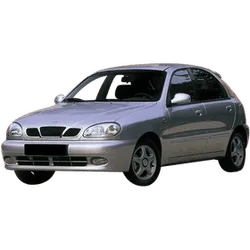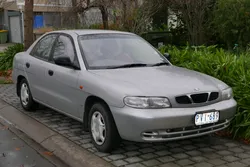

Daewoo Nubira Generation 2 Overview
Explore the features and specifications of the Daewoo Nubira Generation 2. Discover why this model remains popular among car enthusiasts, especially in Portugal.
The Daewoo Nubira, a compact car introduced in the late 1990s, quickly gained popularity for its affordability and practicality. The second generatio...
Technical Specifications
Select Version
Dimensions
Engine
Driving
Others
History and Features
Mycarro AI
Apr 27, 2025
Introduction to the Daewoo Nubira
The Daewoo Nubira, a compact car introduced in the late 1990s, quickly gained popularity for its affordability and practicality. The second generation, launched in 2003, was a pivotal upgrade that introduced several improvements in design, performance, and technology. This model, known for its harmonious blend of style and function, catered to a broad audience looking for an economical vehicle that did not compromise on comfort or features.
Design and Aesthetic Enhancements
The second generation Nubira features a more contemporary and refined design compared to its predecessor. The exterior received a significant makeover, showcasing smoother body lines and a bolder front fascia. The elongated headlights and wider grille offered a more aerodynamic aesthetic, contributing both to its visual appeal and performance. The new dimensions provided a more spacious interior, illustrating Daewoo's commitment to both style and practicality.
Inside, the Nubira Generation 2 demonstrated a thoughtful approach to ergonomics and usability. Quality of materials was a focus, with soft-touch surfaces and well-placed controls elevating the cabin experience. The dashboard layout was intuitive, with a clear display for vital information, making it accessible for drivers. The spaciousness of the rear seats and trunk appealed to families and individuals needing extra space for cargo, positioning the Nubira as a versatile daily driver.
Performance and Engine Options
Under the hood, the Generation 2 Nubira offered various engine options aimed at balancing performance with fuel efficiency. The car was available with both gasoline and diesel engines, including a 1.6-liter and a more powerful 2.0-liter option. The engines were paired with either a five-speed manual or a four-speed automatic transmission, presenting choices that catered to different driving preferences.
The improved suspension system provided better handling and a smoother ride quality, an endeavor to enhance driver confidence across various road conditions. Feedback from users emphasized the car's reliability and good fuel economy, essential in an era where environmental awareness was growing. The Nubira's performance metrics made it a sensible option for both urban commuting and longer journeys.
Safety Features and Ratings
In terms of safety, the Daewoo Nubira Generation 2 was equipped with several features that addressed growing consumer concerns. The availability of airbags, anti-lock braking system (ABS), and electronic brakeforce distribution helped enhance the car's safety ratings. While the safety standards of the early 2000s may seem basic by today's criteria, the Nubira was a step ahead for its time, providing peace of mind to drivers and passengers alike.
Market Reception and Legacy
The launch of the Nubira Generation 2 received a warm welcome, particularly in emerging markets where affordability was a priority. It was recognized for delivering significant value, making it a strong competitor in the compact car segment. Its sales figures reflected its widespread acceptance, and the brand cultivated a loyal customer base that appreciated the car’s combination of style, comfort, and functionality.
However, as competition intensified, Daewoo struggled to maintain its market position. The Nubira Generation 2 eventually lost traction due to the rise of newer models from more prominent brands offering advanced technology and design. Nonetheless, the model remains a notable chapter in Daewoo's history, demonstrating the company's capability to innovate and adapt in the competitive automotive landscape.
Conclusion
Overall, the Daewoo Nubira Generation 2 marked an important evolution in the compact car market during the 2000s. With a focus on design, performance, and safety, it appealed to a broad range of consumers while establishing Daewoo's presence in the automotive world. Although the brand's legacy is complex, the Nubira Generation 2 continues to be remembered for its contributions to offering a reliable and affordable vehicle option in a rapidly evolving industry. Its story is one of promising innovation that set the groundwork for future developments within the Daewoo lineup.
